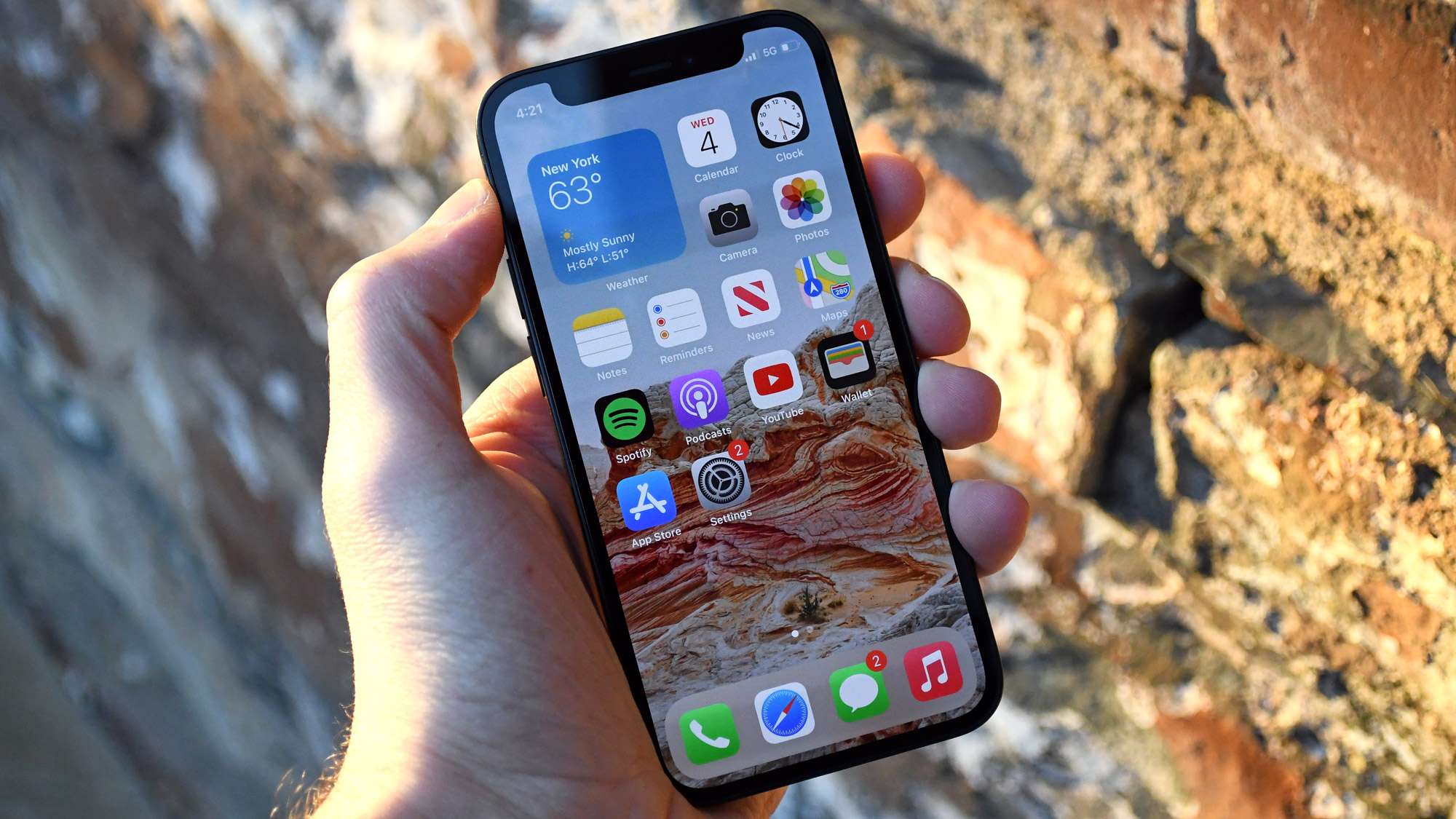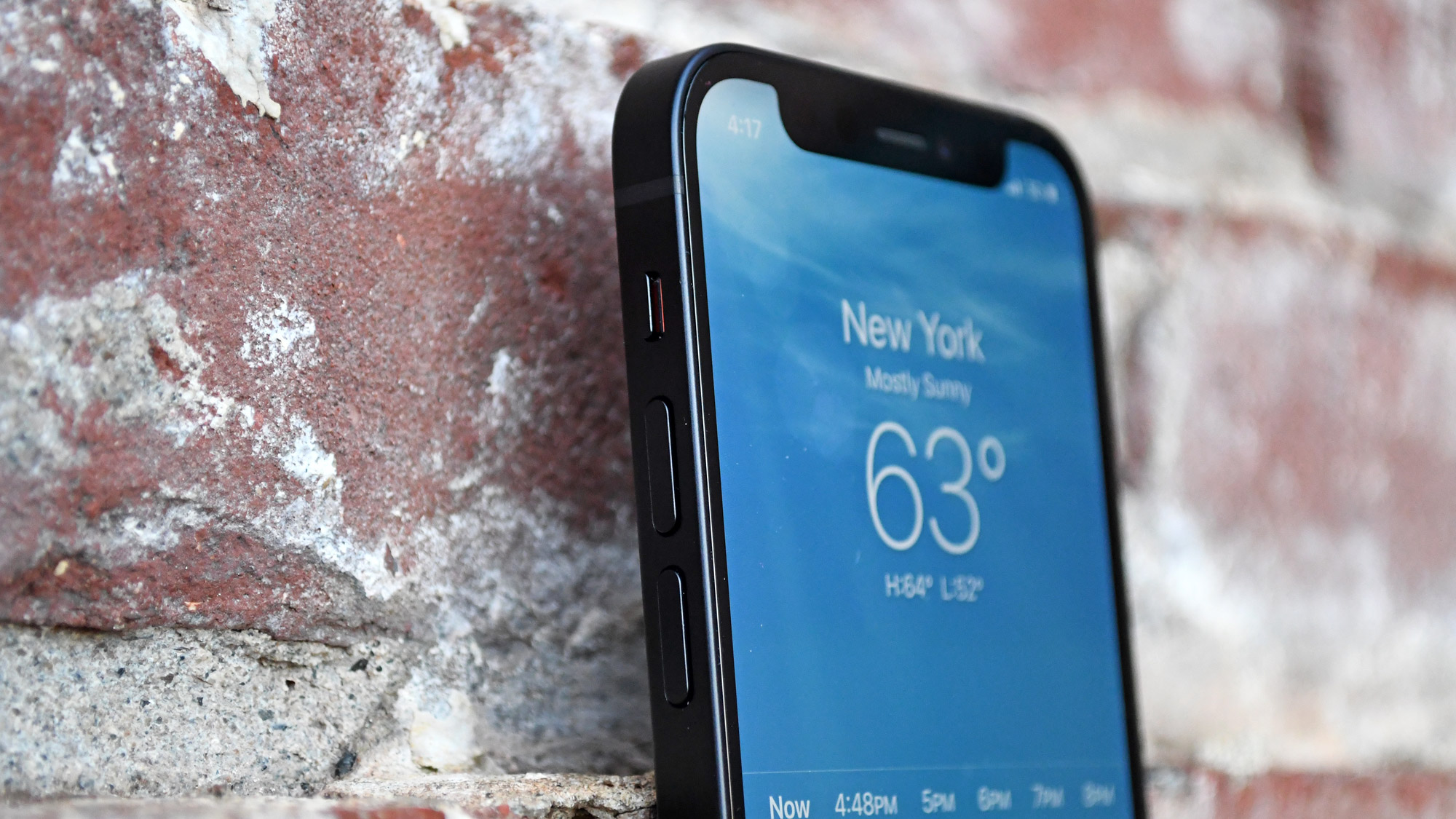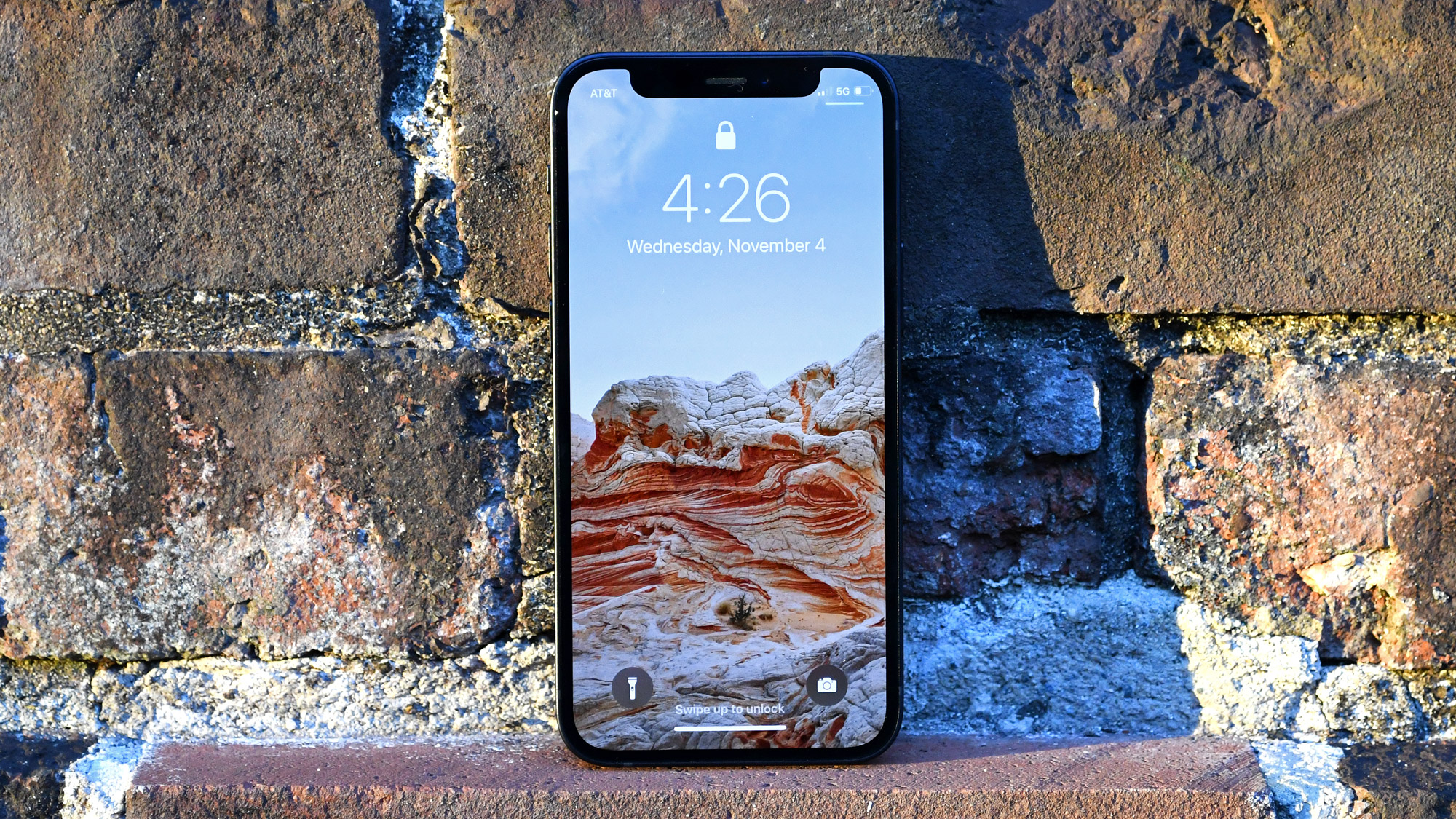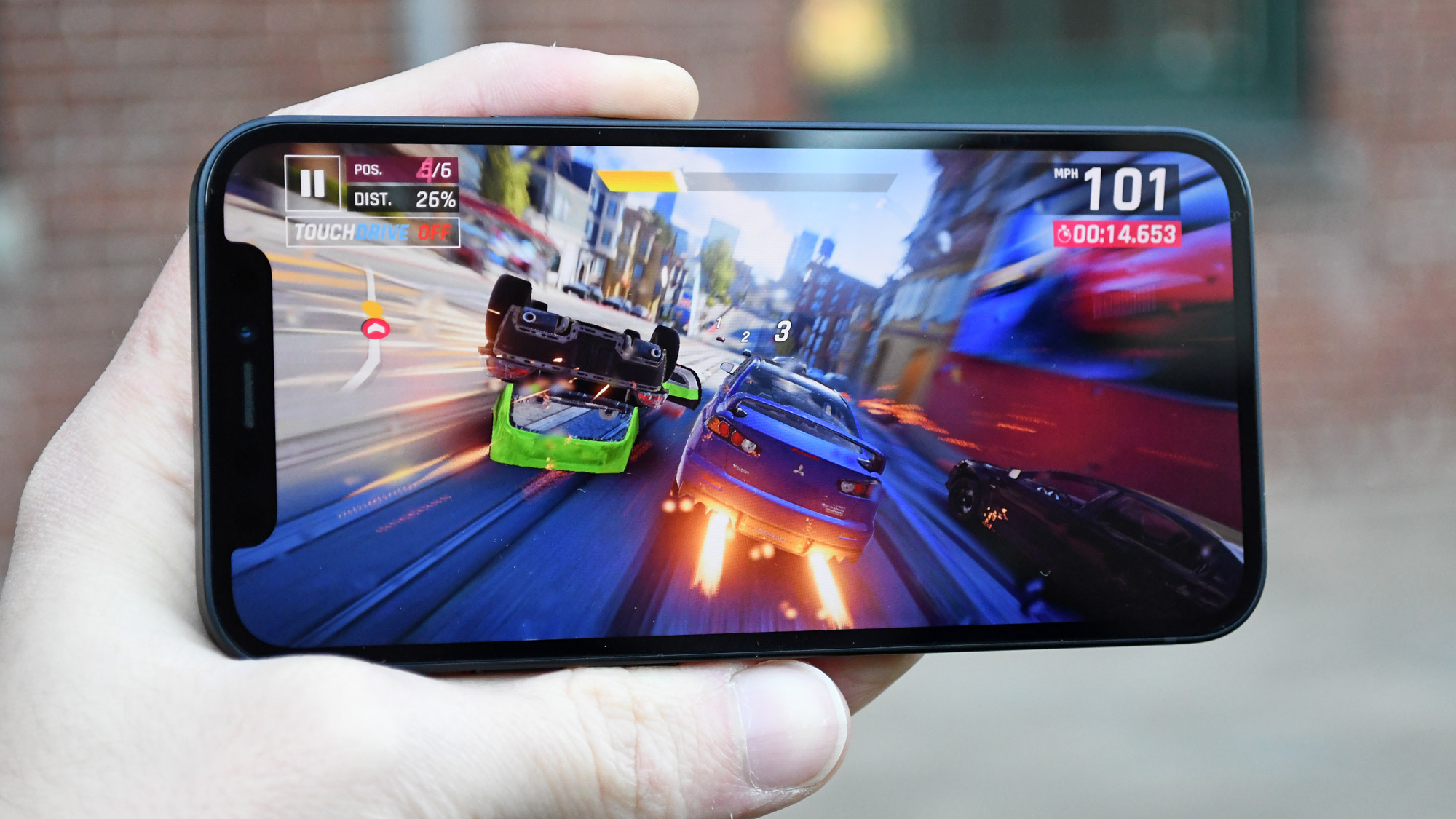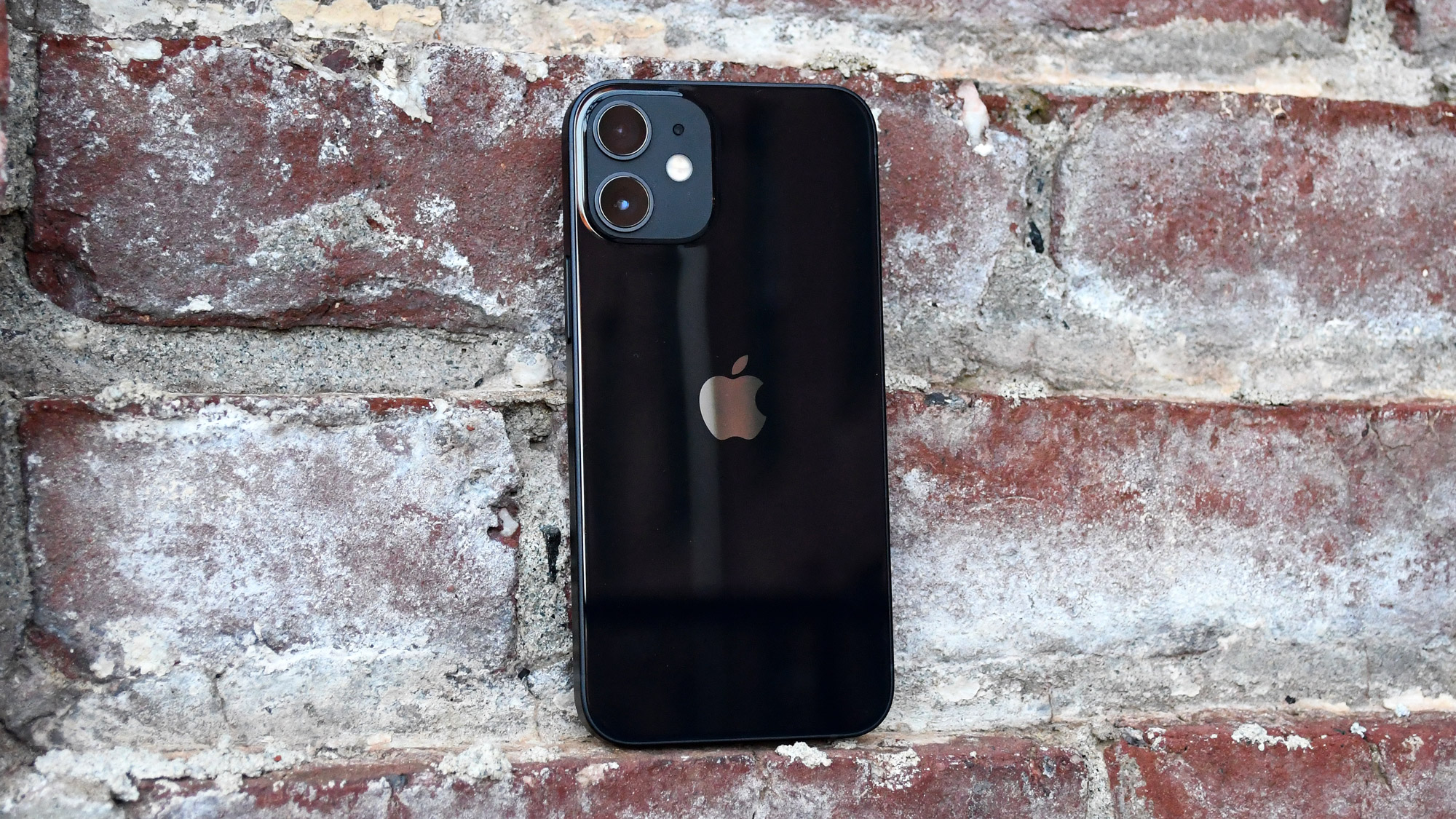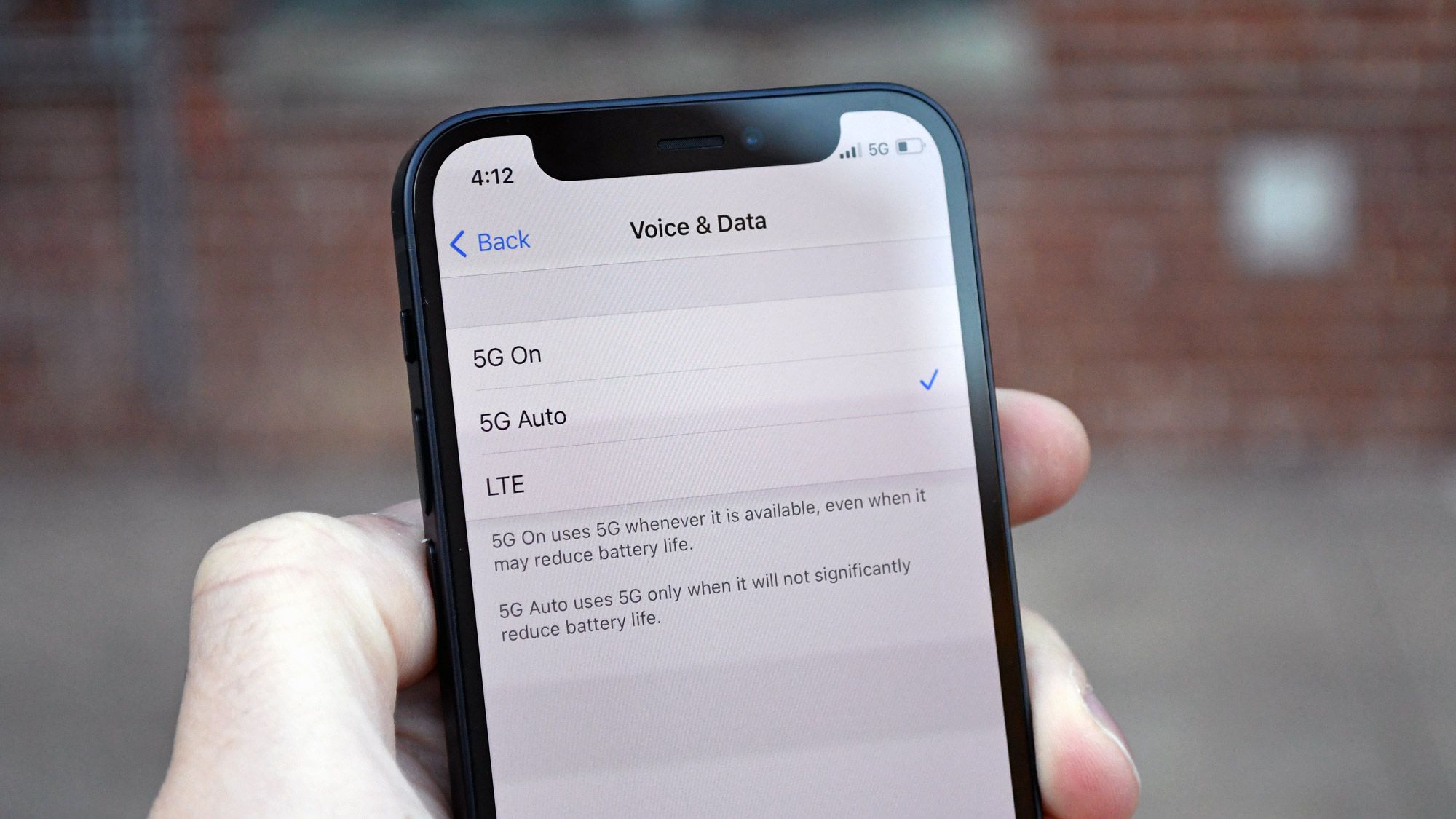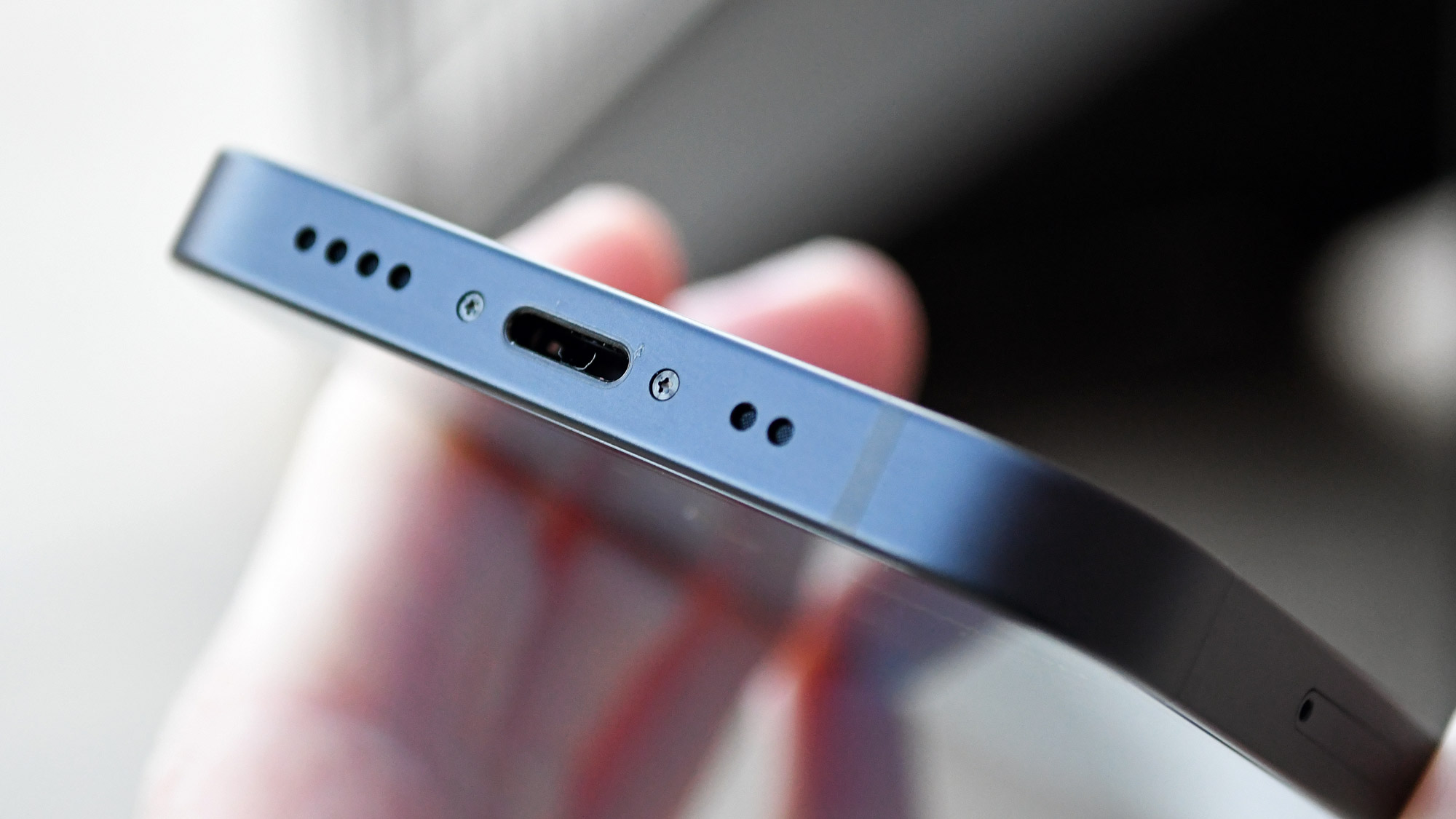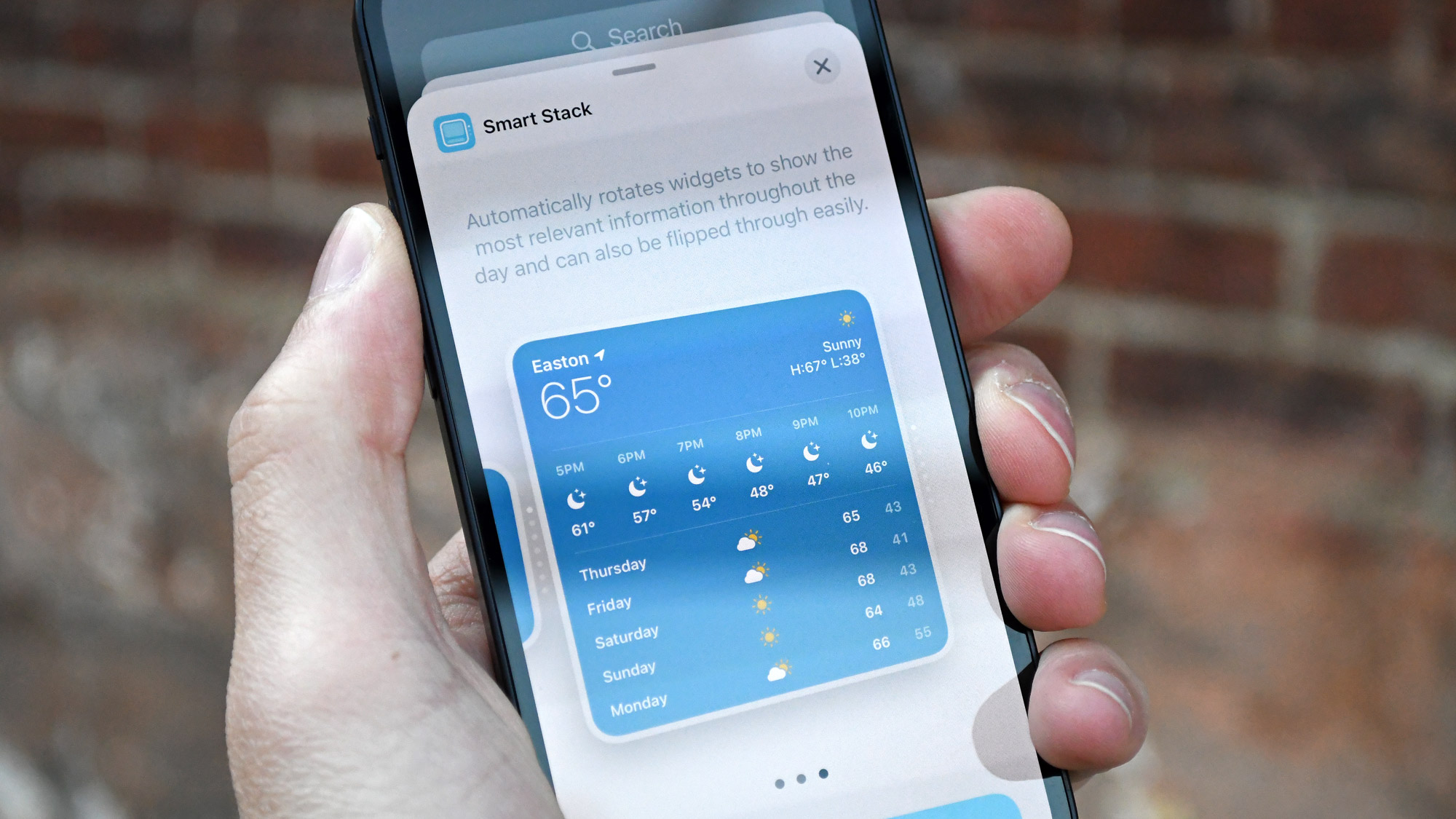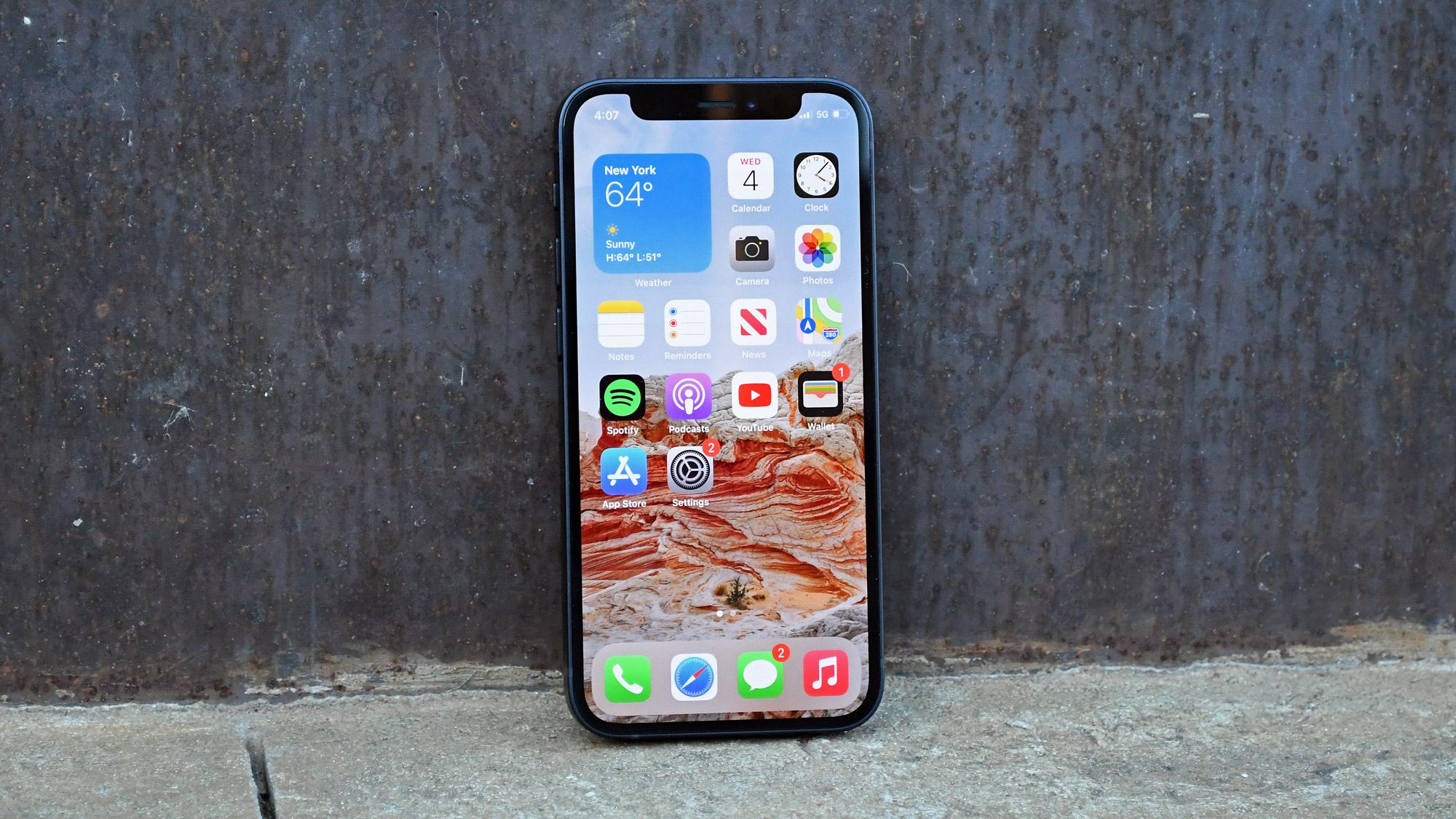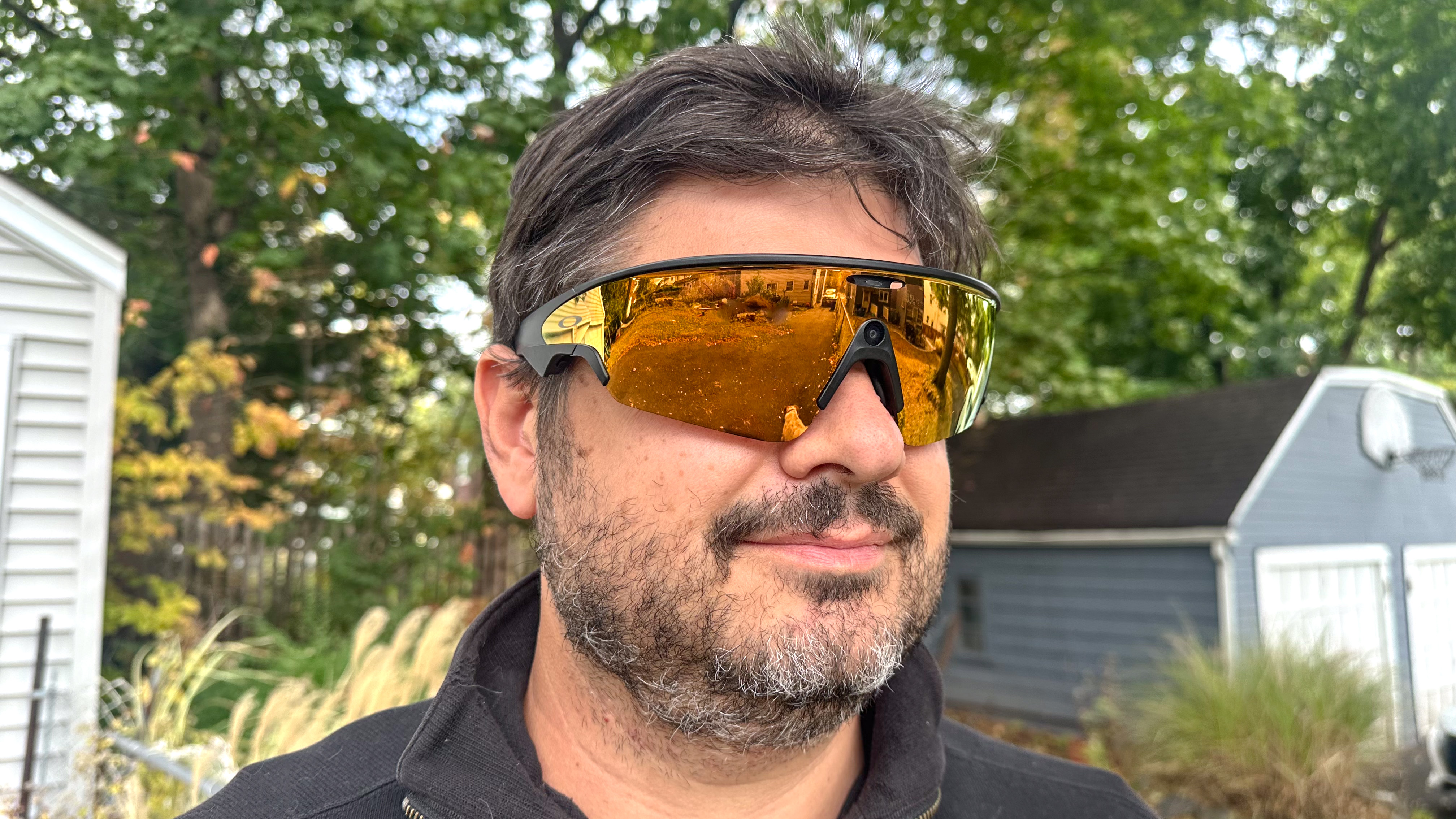Tom's Guide Verdict
The iPhone 12 mini is an affordable and compact yet powerful flagship phone that is truly in a class all its own. Pending the arrival of the iPhone 13 mini, this is the best small phone there is, and an even better 5G value now that Apple dropped the price
Pros
- +
Perfect for small phone lovers
- +
Capable dual cameras
- +
Comprehensive 5G support
- +
Incredible A14 Bionic power
- +
Reasonable starting price
Cons
- -
Only 64GB storage to start
- -
No charger in box
- -
Battery life shorter than other iPhone 12 models
Why you can trust Tom's Guide
“How did they make it that small!?”
That’s invariably the reaction of friends and family when I show them the iPhone 12 mini. They can’t process how tiny this 5.4-inch device is; they didn’t know smartphones could be this small anymore.
- The best iPhones right now
- iPhone 13: Release date, price, specs and leaks
Truthfully, I didn’t either. Small phone lover though I am, I have grown accustomed to the gargantuan size of modern flagships; an age where my 5.8-inch iPhone 11 Pro constitutes a “compact” handset, and devices like the 6.7-inch Galaxy S20 Plus that barely fit in your pocket are inexplicably the norm. The iPhone 12 mini feels like it was made for me.
My favorite thing about the iPhone 12 mini, though, isn’t merely its diminutive frame; it’s the fact that this is essentially, pound-for-pound, the very same device as the 6.1-inch iPhone 12 I’ve already reviewed. You expect corners to be cut in downsized premium smartphones, yet the iPhone 12 mini never makes them. As you’ll see in our iPhone 12 mini review, aside from unavoidable sacrifices to battery life, this is still every bit the iPhone you want, at an even cheaper price now that Apple has dropped the price to accommodate the new iPhone 13 mini. (Yes, Apple made another one as part of the iPhone 13 release.)
The iPhone 12 mini also happens to be a device that lovers of the best small phones and best unlocked iPhones are certain to adore. But be sure to check out our iPhone 13 mini review to see if Apple's newer small phone is right for you.
iPhone 12 mini review: Price and availability
Price: $729 unlocked; $699 on contract
OS: iOS 14
Display: 5.4-inch OLED (2340x1080)
CPU: A14 Bionic
Storage: 64GB, 128GB, 256GB
Rear camera: 12MP wide (ƒ/1.6), 12MP ultrawide (ƒ/2.4)
Front camera: 12MP (ƒ/2.2)
Size: 5.18 x 2.53 x 0.29 in
Weight: 4.76 oz
The iPhone 12 mini debuted a little less than a year ago at $699 on contract, from carriers like Verizon, AT&T, T-Mobile and many others. Off contract, you’d pay $729. At that price, you’ll get 64GB of storage, though there are 128GB and 256GB versions available.
These days, Apple sells the iPhone 12 mini for $599 ($629 if you buy the phone unlocked) to make way for the iPhone 13 mini which inherits that old $699 starting price. The newer mini does offer 128GB of storage in its base model.
Get instant access to breaking news, the hottest reviews, great deals and helpful tips.
Buy your iPhone 12 mini from Apple, and you can lower the price by trading in your current iPhone — an iPhone 8 will net you up to $110 off the iPhone 12 mini, for example, with newer models earning a larger rebate. That's one of the many best iPhone 12 deals we're tracking.
You won’t get a charging adapter or wired EarPods with the iPhone 12 mini, though you will get a Lightning-to-USB-C cable in the box.
Like the other iPhone 12 models, the iPhone 12 mini is built to support sub-6GHz 5G and millimeter-wave 5G (mmWave) on every network. This should mean you’ll get similar 5G band support no matter what iPhone 12 you buy; whatever differences you experience in 5G service will be down to each network’s specific infrastructure and limitations.
iPhone 12 mini review: Design and MagSafe
I never expected Apple to release a handset small enough to make the iPhone SE look big, but then 2020 has been all about subverting expectations.
The iPhone 12 mini has a 5.4-inch display that stretches nearly from edge to edge, impeded only by a notch. Because the screen dominates the device’s surface area in the way that it does, there’s far more available real estate than what the 4.7-inch SE offers, even though the iPhone 12 mini’s footprint is nearly three-tenths of an inch shorter and a tenth narrower. That’s quite an achievement, considering modern phones’ wealth of power-guzzling componentry and need for big batteries.
You almost have to relearn how to live with a device and screen this small; I found my thumbs clashing into each other more often when typing, for example. But the adjustment period isn’t daunting, and as an iPhone 11 Pro owner, I have to admit there’s a part of me that wants to swap out my iPhone for the 12 mini. It’s just so easy to hold and reach every corner of the display.
Aesthetically and structurally, the iPhone 12 mini is identical to the 6.1-inch iPhone 12, only smaller. You have the same flat-edge, matte aluminum design, mostly-glossy glass back and flat display protected by Apple’s new Ceramic Shield material that promises 4x improved shatter resistance. Cupertino has also improved water resistance yet again, as every iPhone 12 is built to withstand up to about 20 feet of submersion for a maximum of 30 minutes.
This is a premium-looking, premium-feeling iPhone for $700, and there’s almost nothing to complain about. Though, if I were forced to nitpick, I’d say the notch is harder to ignore on the iPhone 12 mini. It’s essentially the same size as it is on other larger models, and therefore dominates more of the mini’s tiny display. Nevertheless, the overall package is beautiful.
The back of the iPhone 12 mini is where you’ll find Apple’s new MagSafe system, which can be used for wireless charging or a range of snap-on accessories, like a leather wallet attachments, sleeves, cases and so on.
There’s no significant difference in the way MagSafe operates on the 12 mini relative to other iPhones, save for the fact that Apple has reduced the phone’s peak charging speed over MagSafe to 12 watts, down from 15 watts on the other models. Still, because the 12 mini’s battery is so much smaller than those in the other models, charging speeds are likely to shake out even — more on that later.
iPhone 12 mini review: Display
Apple has closed the gap between the regular and Pro iPhone models this year by offering OLED displays on all of its devices. If you’re upgrading from an LCD-powered iPhone 8 or earlier, or perhaps the iPhone XR, the iPhone 12 mini’s screen is going to present a big leap forward.
Just about everything looks richer on an OLED display. Colors are more vivid, while blacks especially are deeper and truer-to-life. Watching the trailer for The Kid Detective on YouTube, I was drawn to the pastiche of reds, yellows and oranges blanketing the trees of the bucolic autumn suburb in which the film is set.
One thing missing from the iPhone 12 mini’s display repertoire, however, is a high refresh rate. The non-Pro iPhone 12 models were likely never in the running to receive 120Hz panels, but it has to be said that similarly-priced handsets from other companies — including the Google Pixel 5, the OnePlus Nord or Samsung’s Galaxy S20 FE — all offer 90Hz or 120Hz screens. The Galaxy S21 — just $100 more than the iPhone 12 mini — offers a display that dynamically adjusts its refresh rate. The iPhone 12 mini’s display is indeed very colorful and rich, however the overall experience of using the device feels less responsive all around on account of that traditional 60Hz limitation.
Under our light meter, the iPhone 12 mini’s screen registered a maximum full-screen brightness of 505 nits. That’s far from the best we’ve ever seen — the regular iPhone 12 reached 569 nits, for example, while the Galaxy S20 FE topped out at 679 nits. If we were to wager a guess, the iPhone 12 mini’s peak brightness is likely curtailed a bit to eke the best possible battery life out of the device’s relatively small battery. Still, it’s easy enough to read the display outdoors on a sunny day.
In terms of color reproduction, the iPhone 12 mini captured 117.8% of the sRGB color space and 83.4% of the wider DCI-P3 gamut, indicating hues that lean toward realism, but may seem a bit muted compared to what other handsets present out of the box. For example, the Galaxy S20 FE registered 133.3% in DCI-P3, which translates to far more saturation.
iPhone 12 mini review: Camera
Even the smallest iPhone 12 benefits from a dual-camera system, and not just any dual-camera system. This is the same slate of optics you get in the $100 more expensive iPhone 12: a 12-megapixel primary lens with an ƒ/1.6 aperture, paired with a 12MP ultrawide featuring an ƒ/2.4 aperture and 120-degree field of view.
The main sensor is the one that’s seen the most improvement for the iPhone 12 line, with Apple’s fastest-ever ƒ/1.6 lens contributing to a quoted 27% increase in low-light performance and a new optical image stabilization system that can perform 5,000 micro-adjustments per second. That same sensor can also capture 4K HDR video at up to 60 frames per second, or 30 frames per second with Dolby Vision processing enabled.
So what kind of photos can iPhone 12 mini owners expect from that new primary camera? I took Apple’s smallest flagship and the similarly-priced Pixel 5 out on a peaceful fall day to snap a pair of photos of a river, and came away impressed with the result from both for different reasons. The Pixel 5 does color in more of the river bank and hillside to the left, and the last leaves left hanging on the trees pop just a bit more. However, the iPhone 12 mini’s rendition is universally sharper. And though it’s not necessarily the focal point of the frame, the iPhone’s shot retains more color in the brick wall to the right as well.
Neither the iPhone 12 mini nor the Pixel 5 has a telephoto lens with optical zoom — they both rely on processing to sharpen up digital zoom. Previously, this was an area where the iPhones have struggled, but Apple has definitely closed the gap with the iPhone 12 range, and so the biggest difference relates to color balancing and contrast here. Google’s phone still may retain a slight advantage in sharpness with its Super Res Zoom system, but the smoke stack itself is clad in considerably more darkness and everything has a bit of a red shift to it, whereas the iPhone 12 mini better picks up the specular highlights bouncing off the brick.
The iPhone 12 mini has an especially wide ultrawide lens compared to the Pixel 5, pulling in more of the surroundings in this example. This does certainly lead to some distortion at the fringes, but the iPhone controls it well, and the result is an image with more color and deeper contrast than what Google’s handset has given us here. What’s especially surprising is how Apple’s imaging system is able to really hone in on details like the window panes and brick texture, achieving a crispness that the Pixel 5 can’t match, even though it packs a higher-resolution sensor on paper.
Improvements to Apple’s Night mode, along with that aforementioned new wider aperture, certainly help the iPhone 12 mini rein in more light in adverse conditions. I’m impressed with how the tiny iPhone navigated this scene, which mixed extremely dark and shadowy regions with white-hot sources of light from lamps. I also prefer the warmer tone and white balance of the iPhone’s shot, compared to the Pixel’s rendition here. That said, Google’s Night Sight technology is a bit better at lighting those especially dim areas, like the roof of the building immediately ahead and the brick off in the upper left. Google’s still got a bit of an edge at night in my opinion, though Apple’s certainly done well to close the gap with this generation.
To get a sense of how the iPhone 12 mini’s low-light performance fares against its predecessor’s, I snapped another pair of images of a nearly pitch-black river, this time comparing it to my iPhone 11 Pro. There isn’t much separating the two, though if you look closely, the newer iPhone dials in a bit more sharpness closest to the camera, like with the leaves in the immediate foreground and the reflection of the street lamp in the water. Throughout most of the frame, however, it’s clear to see Apple’s hasn’t transformed Night Mode with this generation — the differences are few and far between.
But the iPhone 12 mini’s greatest advantage, in my opinion, is the way it navigates selfies and portraits. Compared to Google’s effort, I’d be much more willing to post Apple’s showing here to my Instagram. Not only is the iPhone’s shot generally sharper, retaining more warmth in my skin tone, but it also nails those especially minute details, like the fabric of my winter hat and the texture of the tag on the front. This is Apple’s Deep Fusion feature at work, snapping and melding multiple exposures together to dial up the fidelity on the most intricate aspects of every scene. Look closely, and you’ll also notice the iPhone does a better job of isolating my hair and cap from the background bokeh as well.
iPhone 12 mini review: Performance
The iPhone 12 and iPhone 12 Pro are the most powerful smartphones we’ve ever tested at Tom’s Guide, and the iPhone 12 mini shares their processor — the A14 Bionic. Typically, small phones are short-changed on the performance front, but the iPhone 12 mini is every bit as fast as those larger, pricier variants.
It really doesn’t matter what you’re doing on the iPhone 12 mini. Whether gaming, swiping through social media or using the camera, this device never drops a bead of sweat. Asphalt 9 Legends is my graphics-pushing game of choice when I test handsets, and this little iPhone still pushes console-quality visuals at a stable framerate — a rare feat for this particular title. I was especially impressed with the smoothness of the motion blur, which really heightened the immersion of racing on this tiny display.
In the system-wide Geekbench 5 multi-core test, the iPhone 12 mini totaled 4,123 points — even better than the iPhone 12’s 3,859 points, and certainly worlds apart from the Galaxy S20 FE (2,928) and Pixel 5 (1,617). The Galaxy S21, which came out months after the iPhone 12 mini and boasts a fast Snapdragon 888 system-on-chip, still falls short of the iPhone 12 mini's result, with a 3,302 score.
Likewise, in our video encoding test, where we convert a 4K clip to 1080p using the Adobe Premiere Rush app and time the result, the iPhone 12 mini needed just 27 seconds to complete the task, compared to the Galaxy S20 FE’s 1 minute and 24 seconds. The older iPhone 11 needed 46 seconds, so it’s not just Android phones that the A14 outperforms.
Finally, bringing it back to graphics, 3DMark’s Wild Life benchmark offered yet another glimpse at the iPhone 12 mini’s power. Apple's device tallied 39 frames per second in this test — identical to the iPhone 12 and 12 Pro, and much better than the Galaxy Note 20 Ultra (25 fps), OnePlus 8T (23 fps) and Pixel 5 (7 fps).
iPhone 12 mini review: 5G
Apple has gone all in on 5G for the iPhone 12 line, and that extends to the iPhone 12 mini as well. While it’s no longer rare to see 5G handsets for less than $700 anymore, it’s the iPhone 12 mini’s complete support of next-generation networks in all their forms that makes it a great 5G value.
Most inexpensive or mid-range 5G phones support sub-6GHz 5G, which carries long distances across the country, but offers marginally better speeds than what LTE already delivers at best. But there’s also millimeter-wave (mmWave) 5G, which is mostly reserved for dense urban areas. Millimeter-wave networks can achieve multi-gigabit downloads, so long as you’re close enough to the 5G small cell node and have an unobstructed line-of-sight view.
This latter form of 5G is the kind that most cheaper 5G phones skimp out on to save costs and battery life. However, the iPhone 12 mini supports mmWave 5G on every network, and even if you buy it unlocked. That, coupled with Apple’s claim that this device supports more 5G bands than any other handset, makes it the most future-proofed choice for a 5G phone on the market right now. It’s certainly the smallest 5G phone too, given that 5G phones tend to be larger to fit bigger batteries to offset their increased power draw.
That said, don’t expect phenomenal speeds everywhere, especially over those low-band, sub-6GHz networks. In eatsern Pennsylvania I only saw download speeds hovering around 50Mbps over AT&T’s 5G in my testing. State-of-the-art LTE Advanced networks can download five times faster than that, so the presence of a 5G indicator on your iPhone’s screen doesn’t mean it’s going to be lightyears faster in every instance.
5G also can consume a lot of power, which explains one of the iPhone 12’s other new features — Smart Data Mode. Enabled by default, Smart Data Mode drops the device back down to LTE to consume less power, typically when background processes are running or data is being streamed when the screen is off. If you notice Smart Data Mode resulting in longer downloads or not tapping into those faster data speeds as readily as you like, you could always turn it off — though, given the kinds of situations under which it operates, that’s probably unlikely.
iPhone 12 mini review: Battery life and charging
With such a small frame, the iPhone 12 can’t help but lose out to its brethren where battery life is concerned. Apple doesn’t publish battery life figures — you’ll have to wait for teardowns to reveal that information — but we do know that the larger iPhone 12 and iPhone 12 Pro pack 2,815-mAh units.
The 6.1-inch iPhone 12 lasted 8 hours and 25 minutes in our battery test, where devices repeatedly load web pages over mobile data (in this case, AT&T 5G) while set to 150 nits of screen brightness. The iPhone 12 mini, on the other hand, averaged 7 hours and 28 minutes on the same network.
Any result in our test under 8 hours isn’t ideal; the Pixel 5, for example, lasted two hours longer, also on 5G, likely thanks to a significantly larger 4,000-mAh battery. At one point during my testing of the 12 mini, I streamed video and briefly gamed for three straight hours, and the phone’s battery life dropped to 50%. This probably won’t be the best device for users who really need every minute of longevity they can get during the day.
The iPhone 12 mini doesn’t ship with a charger, though using Apple’s new 20-watt brick, we saw 60% in 30 minutes. The new MagSafe charging system, which offers peak speed of 15 watts, actually tops out at 12 watts for the iPhone 12 mini in particular. Given the smaller size of the mini’s battery, 12 watts should be fast enough to equal the other, larger iPhone 12 models in terms of charging times, but it is a small stipulation to be aware of nevertheless.
iPhone 12 mini review: iOS 14
All iPhone 12 models launched with iOS 14 — the latest version of Apple’s mobile operating system at the time. That update actually packs a number of sizable changes and upgrades compared to iOS 13. Most notably, the update adds support for more colorful, informative widgets that can be placed on any home screen, and introduces the App Library which organizes your apps into folders by type.
Notifications are now more compact, obscuring less of the screen; Maps and Messages have been redesigned a bit to add extra functionality; and there’s a picture-in-picture mode that allows you to watch or listen to video no matter what app you’re currently using, among many other additions. For a deeper look into all of iOS 14’s features, check out our iOS 14.5 review.
When iOS 15 arrives on Sept. 24, expect an easy upgrade for your iPhone 12 mini. We've got a look at the best iOS 15 features coming to all iPhones.
iPhone 12 mini review: Verdict
The iPhone 12 mini is exactly the kind of device I wish more phone makers had the conviction to build. And Apple has, in the form of the iPhone 13 mini that offers more storage, a faster chipset and camera improvements.
In a way, the iPhone 12 mini felt like the most impressive member of the iPhone 12 lineup, because it does everything the larger, more expensive models do, but amazingly fits all that capability into an impossible small frame.
As I said when the iPhone 12 mini was announced, the arrival of 5G has forced us to accept so many compromises in the phones we buy. They’ve had to become significantly bigger, to accommodate more spacious batteries and all the necessary antennas and modems to support next-generation networks (especially the mmWave kind). They’ve also had to become more expensive, to offset the cost of all these new and emerging technologies and components.
One could argue that the iPhone 12 mini isn’t as great a “deal” as it may seem. Sure, it now starts at $599 — on contract, mind you — but it’s also likely smaller than many consumers would be comfortable with. The majority of shoppers may flock to the 6.1-inch iPhone 12, which has also seen a price cut to $699.
For some discerning buyers, though, this will be exactly the iPhone they’ve been waiting for, at a very agreeable price. The iPhone 12 mini answers the call for a premium small iPhone, and in doing so immediately rockets to the top of our list of the best small phones. It is an achievement of packaging, and a device without a true competitor, except for the newer iPhone 13 mini. So long as you can put up with a slight hit to battery life and don't need Apple's latest compact phone, the iPhone 12 mini is truly a phone in a class all its own.
- More: Treat your new phone to one of the best iPhone 12 mini cases
Adam Ismail is a staff writer at Jalopnik and previously worked on Tom's Guide covering smartphones, car tech and gaming. His love for all things mobile began with the original Motorola Droid; since then he’s owned a variety of Android and iOS-powered handsets, refusing to stay loyal to one platform. His work has also appeared on Digital Trends and GTPlanet. When he’s not fiddling with the latest devices, he’s at an indie pop show, recording a podcast or playing Sega Dreamcast.

